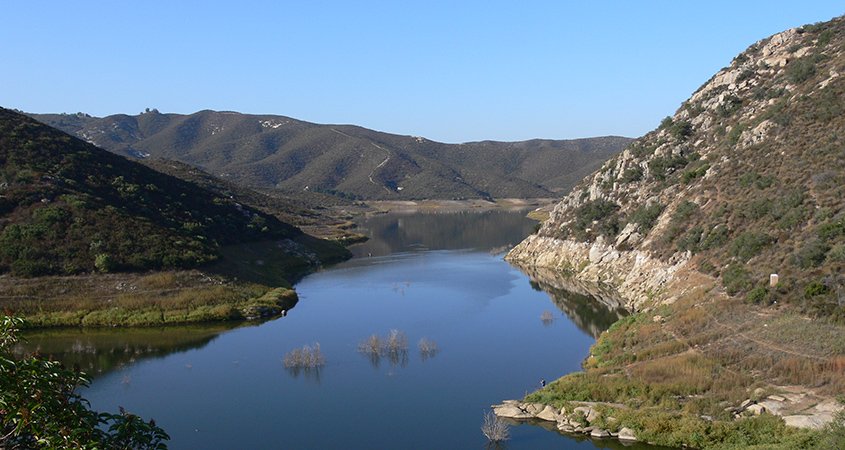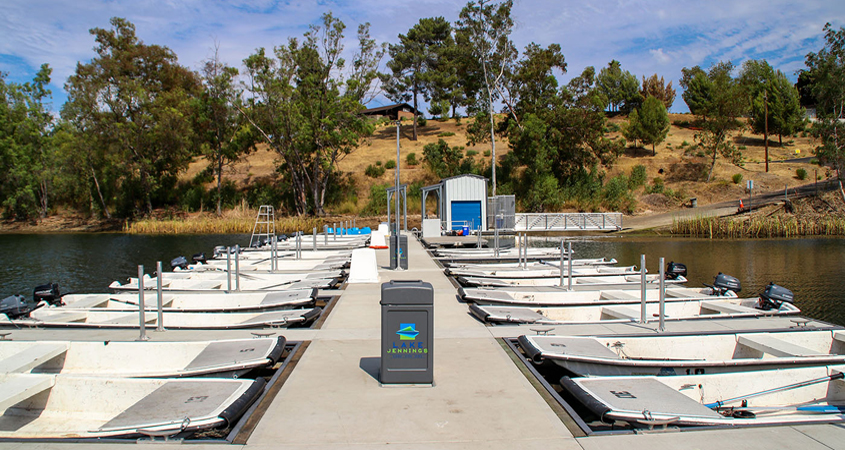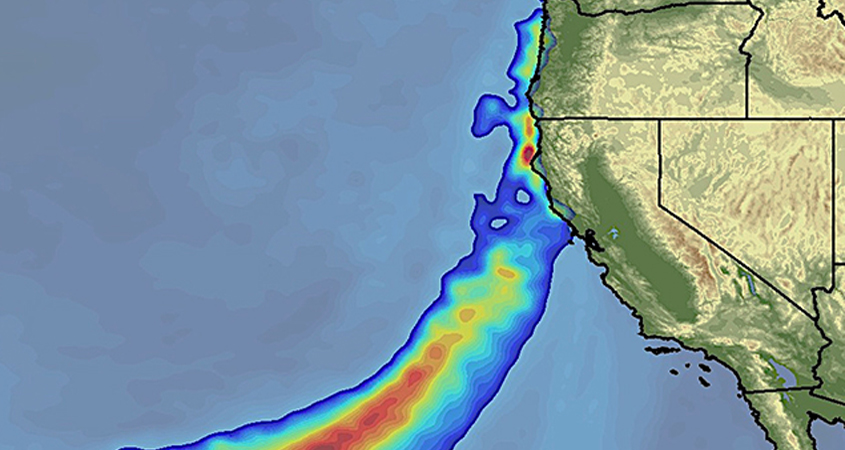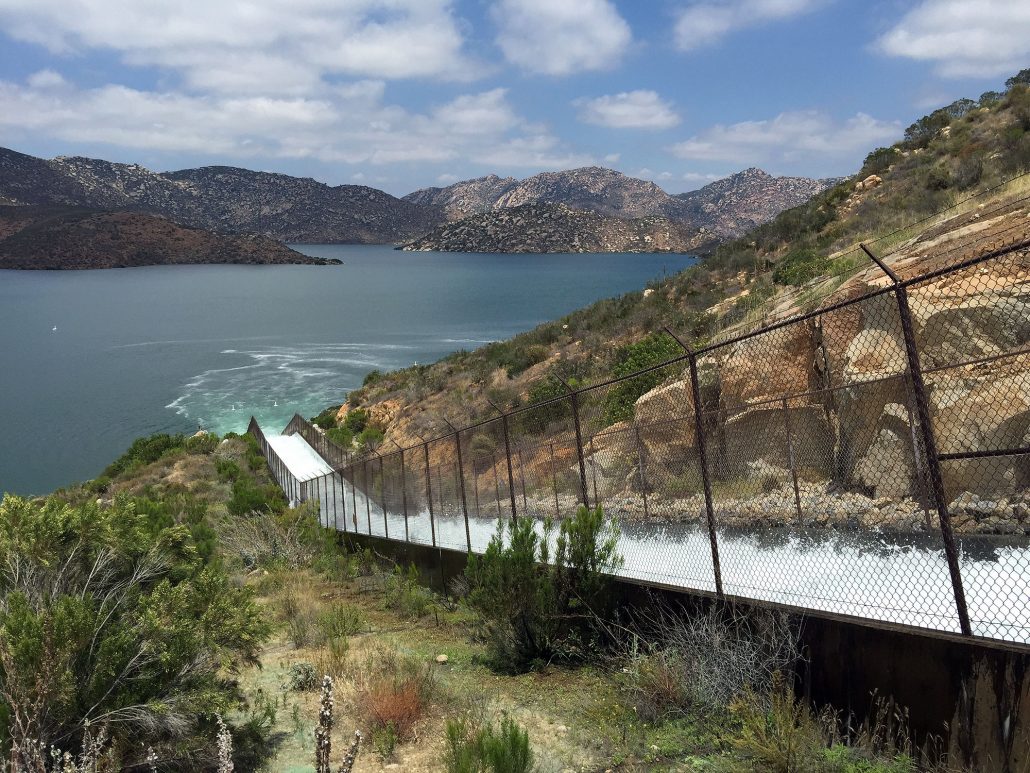Proposed Federal Grant Program Could Bolster Lake Mead Water Levels
Water officials in Las Vegas are backing a federal bill that could help pay for a California project that would leave more water in Lake Mead.
Water officials in Las Vegas are backing a federal bill that could help pay for a California project that would leave more water in Lake Mead.
The Sweetwater Authority has added another day for the public to enjoy activities at the Sweetwater Reservoir in Spring Valley. Previously open Saturdays through Mondays, the Authority expanded operations to include Fridays to give residents more opportunities to get outside and experience nature this summer.
Starting Friday, July 2, Sweetwater Reservoir will be open so that San Diego County residents can enjoy fishing, hiking, biking and bird watching. The reservoir hours are 7 a.m. to 5 p.m.
The addtional day also means another day for the Sweetwater Authority Shoreline Fishing Program.
“Our Fishing Program provides cost-effective, fun and educational recreational opportunities for San Diego County residents of all ages,” said Sweetwater Authority Board Chair Hector Martinez. “We’re pleased to expand this program to include Fridays and welcome residents to enjoy the beauty of our water and the environment this Independence Day weekend.”
In addition to the Sweetwater Reservoir, shoreline fishing is also available at the Authority’s Loveland Reservoir near Alpine.
Both lakes host a healthy population of bass, catfish, bullhead, bluegill, perch, rock bass and more. Catch and release is encouraged to avoid overfishing, and anglers must comply with California Fish and Game regulations.
The Sweetwater Reservoir provides shoreline fishing along a 2.5-mile stretch on the south side of the reservoir. Access is via San Miguel Road in Bonita near Sweetwater Summit Park.
Hours of Operation:
Fridays, Saturdays, Sundays and Mondays
7 am to 5 pm, March – September
7 am to 4 pm, October – February
Daily Fees:
$5 per adult
$2 per child under 16 (must be with an adult)
$3 per car for non-fishing visitors

Shoreline fishing is available at Loveland Reservoir near Alpine. Photo: Sweetwater Authority
The Loveland Reservoir provides fishing along a five-mile portion of the shoreline. Access is via the Interstate 8 East to Tavern Road/Alpine off-ramp.
Hours of Operation:
Open Daily
6 am to 6 pm, March – September
6 am to 5 pm, October – February
Daily Fees:
There are no fees to access Loveland Reservoir.
A California State Fishing License is required at both reservoirs for those 16 and older, and adult supervision is required for children under the age of 16.
(Editor’s note: The Sweetwater Authority is one of the San Diego County Water Authority’s 24 member agencies that deliver water across the metropolitan San Diego region.)
Gov. Gavin Newsom and legislative Democrats had the opportunity to alleviate the state’s twin crises of drought and wildfire by including resources for ongoing funding, prescribed burning and water storage in this year’s budget. These solutions are not new, but they require political will. In light of the haunting memories of past catastrophic wildfires, this year’s budget will miss an opportunity.
With California in the throes of a second year of drought conditions, the mega-water agency of Southern California served notice Tuesday that it’s prepared to spend up to $44 million to buy water from Northern California to shore up its supplies.
The board of the Metropolitan Water District of Southern California, which serves 19 million urban residents, authorized its staff to begin negotiating deals with water agencies north of the Sacramento-San Joaquin Delta, where supplies are generally more plentiful.
The Marin Municipal Water District is calling on customers to voluntarily cut back on their water use for the first time since the 2013 drought in response to meager rainfall reminiscent of the notorious 1976-1977 drought.
“I have to say that looking at the forecast and how much rainfall we’ve had to date, we might actually be happy if we achieve the 1976-77 rainfall numbers at this point,” Paul Sellier, the district’s operations director, told the board of directors on Tuesday evening.
Sweetwater Authority began a controlled transfer of water between its two reservoirs Monday to bolster a low water level in one of them. Water that leaves Loveland Reservoir south of Alpine will be transferred over the next several weeks through the Sweetwater River channel and captured at Sweetwater Reservoir where it can be treated and distributed to authority customers at a lower cost than importing water. Loveland Reservoir is more than 70% full, while Sweetwater Reservoir’s level is at 20% of capacity.
The rainy season is still young, but that’s about the only consolation to be found in California’s initial estimate this week that farmers who get water from the State Water Project will only get 10 percent of their requested allocations next year. This marks the third consecutive year the initial estimate has been that low.
Two years ago, Cape Town, South Africa, a city of 4 million people, informed its shocked citizens that the city was just a few months away from running out of water due to drought. It was a wake-up call for all of us to become much better stewards of our own water. Luckily, for Cape Towners, innovative water conservation and efficiency measures, smarter data use, expanded water storage, and help from Mother Nature all combined to help them avoid a major water shutoff.
A new floating boat dock at popular reservoir and recreation facility Lake Jennings was unveiled with a ribbon-cutting ceremony on August 31 and opened to the public for boating and fishing activities.
The dock is reinforced concrete encapsulating a solid polystyrene core, which makes the dock float. Numerous safety features include a nonskid concrete surface, enhanced security fencing and access gate, gangway handrails, and support posts to assist visitors as they enter and exit boats.
The new dock is replacing a wooden dock that, after 25 years, had reached the end of its useful life. Visitors use the dock to rent motorboats, rowboats, kayaks and paddleboats to explore the lake and catch fish.
“Over the years, we have upgraded our campground facilities, installed new trails, and improved our recreation programs to make Lake Jennings a fantastic East County destination,” said Helix Water District board member and Parks, Land, Lakes and Garden Committee Vice-Chair Joel Scalzitti. “With our recent dock improvements, even more visitors can enjoy everything the lake has to offer.”
The modular dock is easily reconfigured and expanded and features a new, solar-powered dock house, lighting improvements for nighttime operations, shade structure, lockable kayak storage, and additional boat slips.

Visitors can use the Lake Jennings boat dock to rent motorboats, rowboats, kayaks, and paddleboats to explore the lake. The replacement dock is expected to last for generations to come. Photo: Helix Water District
“This project is a long-term investment in our lake operations and the community,” said Helix Water District board member and Parks, Land, Lakes, and Garden Committee Chair Dan McMillan. “This is a high-quality dock and it sets the standard for future improvements at the lake.”
The district’s board is in the early stages of evaluating improvements of similar quality at the lake’s campground.
Lake Jennings is one of two reservoirs owned by Helix Water District. It has a water storage capacity of 9,790 acre-feet and is open to the public for boating, fishing, camping, and hiking.
The lake is currently open on Fridays from 3 p.m. to midnight for night fishing, and for fishing and day-use on Saturdays and Sundays from 6 a.m. to 3 p.m. The campground – which boasts full-hookup, partial-hookup, non-hookup, and tipi sites – is open daily and accepting reservations. Further information, including COVID-19 safety requirements for visitors, is available: www.lakejennings.org.
The San Diego County Water Authority is partnering with the Scripps Institution of Oceanography at UC San Diego to better predict atmospheric rivers and improve water management before, during, and after those seasonal storms.
This month, Scripps’ Center for Western Weather and Water Extremes (CW3E) launched the Water Affiliates Group, which brings together cutting-edge science and hands-on water industry experience to enhance reservoir operations in light of the changing climate. The Water Authority has a long-running alliance with Scripps and is among six founding water agencies statewide.
CW3E and its partners will share and support best practices in forecast-informed reservoir operations, increase research around atmospheric rivers and droughts, and develop strategies for mitigating flood risk and increasing water supply reliability.
“This partnership with Scripps Institution of Oceanography underscores our commitment to strategic, science-based decision-making and long-term planning,” said Jim Madaffer, chair of the Water Authority’s Board of Directors. “By supporting advances in forecasting, we can more efficiently and effectively manage water resources both locally and statewide. This ultimately will benefit everyone in California by helping sustain our economy and quality of life.”

Atmospheric river storms cause 40% to 60% of annual precipitation and most of the flood damage on the West Coast. Graphic: Scripps Institution of Oceanography
Water Authority General Manager Sandra L. Kerl said the collaboration aligns closely with Governor Newsom’s Water Resilience Portfolio, which prioritizes voluntary agreements, smart water storage strategies and coordination of data collection.
“This is a great example of how water agencies are stronger together by addressing major climate challenges that affect everyone across the arid West,” Kerl said. “By combining forces with some of the leading scientists in the world, we will enhance our planning capacity and be ready to adapt to whatever the future brings.”
Atmospheric river storms cause 40% to 60% of annual precipitation and most of the flood damage on the West Coast. Managing reservoirs for both flood control and drinking water supply retention is challenging because 20th-century practices and regulations are decreasingly relevant due to changing patterns for snowmelt and rainfall.

CW3E has numerous tools and technologies that affiliates can use to augment water research and improve on-the-ground decisions of water managers. Photo: San Diego County Water Authority
CW3E is a leader in Forecast Informed Reservoir Operations, which uses data from watershed monitoring and modern weather and water forecasting to help water managers determine the best strategies for retaining or releasing water from reservoirs. CW3E has numerous tools and technologies that affiliates can use to augment water research and improve on-the-ground decisions of water managers. The group’s research covers water supply reliability, flood management, greenhouse gas mitigation, groundwater recharge, public safety, observations, forecasting, decision support, climate outlooks, and hazard assessment.
The Water Authority is working with CW3E to assess how better near-term and long-term precipitation forecasts can improve reservoir planning and operational management in the San Diego region by maximizing local water supplies and the reliability of water resources through a mix of planning processes and real-time decisions.
Joining the Water Authority as founding partners are Sonoma Water, Orange County Water District, Yuba Water Agency, Turlock Irrigation District, and Irvine Ranch Water District.